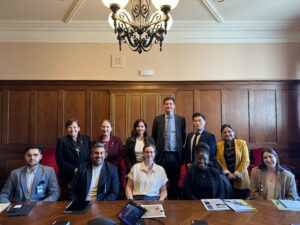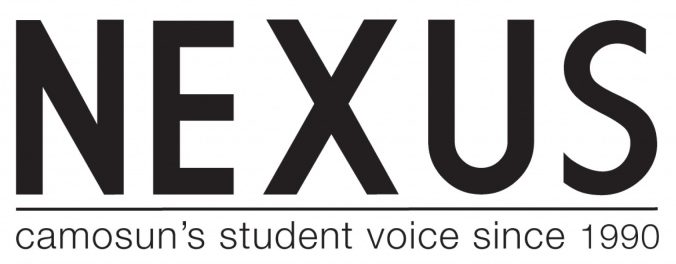The BC Federation of Students (BCFS), who represent 14 public post-secondary institutions—including Camosun College—across the province, met with BC premier David Eby, minister of post-secondary education and future skills Anne Kang, and MLAs during its Spring Advocacy Week, from March 31 to April 2. The BCFS, who advocate for affordable post-secondary education, are lobbying for an increase in operation funding at post-secondary institutions, releasing the results of a review of post-secondary funding, and strengthening the Tuition Limit Policy. Despite economic concerns, BCFS secretary/treasurer Cole Reinbold says the discussion was productive.
“When it comes to increasing funding, that was also met with positive responses. It’s difficult right now because of the deficit that the province is in,” says Reinbold. “But most MLAs did acknowledge that post-secondary does need to be funded better, and that is exactly what our lobby ask is, that the government must restore provincial funding to our institutions to no less than 75 percent of budgets, because this is the only way to stop our institutions from crumbling.”
On March 4, the NDP tabled their current budget with an investment of $3.5 billion into post-secondary education. However, that funding only covers inflation and salary increases for bargaining units that came up this fiscal year; there is no new operational funding from the provincial or federal governments (Eby did not respond to a request for an interview for this story; Kang declined an interview request).
Currently, public post-secondary institutions’ operating costs are funded at 41.1 percent by the provincial government. In the ’90s, institutions were funded by the provincial government at 80 percent. In 2011, under premier Christy Clark, there was a change in the funding model. In an effort to replace an aging population and increase support for local economies, Clark set a goal of increasing international student enrollment by 50 percent. Post-secondary institutions began relying more on tuition fees than the government for operational expenses. The result has been a divestment in post-secondary education over an entire generation.

In the summer of 2022, under the NDP, a review of the funding model was started; however, its release has been delayed multiple times. The BCFS has been lobbying for the funding review to be released so all stakeholders know the status of post-secondary education. The funding model provides institutions with long-term financial stability.
“The funding review is actually more relevant now than it has ever been, because a funding review was done post COVID, and COVID really showed a lot of the cracks in our post-secondary system,” says Reinbold. “So, when COVID happened, a lot of international students couldn’t study in Canada anymore, so a lot of institutions started to see those cracks of what happens when that volatile revenue source is no longer there. And then they did the funding review.”
After the funding review was started, the federal government introduced the cap on international student visas. As more post-secondary institutions hit a financial crisis, it’s been critical for the BCFS that the funding review be released to understand the full impact of the international student visa cap.
Post-secondary education also impacts local economies. In 2018, international students contributed $4.7 billion in spending in BC and created approximately 53,500 jobs across the province.
“Thompson River University [TRU] contributes $850 million annually to the Kamloops economy and supports one in every 10 jobs. And TRU isn’t the outlier here. Institutions are economic drivers for the communities that they’re in, and so when our institutions struggle, the community struggles, jobs struggle. So without our institutions being properly funded, we can expect our local economies to also crumble,” says Reinbold.
The third ask that the BCFS brought to Eby and Kang was a strengthened Tuition Limit Policy. This policy sets out the two-percent cap on increasing domestic tuition. However, there isn’t a limit on increasing ancillary fees—colleges and universities can increase their revenue and circumvent the tuition cap by adding new ancillary fees.
“What we’re asking is that they strengthen the tuition fee limit policy to also include the addition of new ancillary fees,” says Reinbold. “This stronger policy is absolutely essential to protect the affordability and access of education to people, young people in BC, who are looking to skill, re-skill, and enter the workforce.”
Public post-secondary institutions are not allowed to run deficits without an approval from the government; however, there are six that have been approved due to lower enrolment of international students because of the new policies. The BCFS says that next year, that number is expected to go up to 17 out of 25 institutions.
“That is very troubling,” says Reinbold, “and it really paints the picture that our system is collapsing before our very eyes.”
